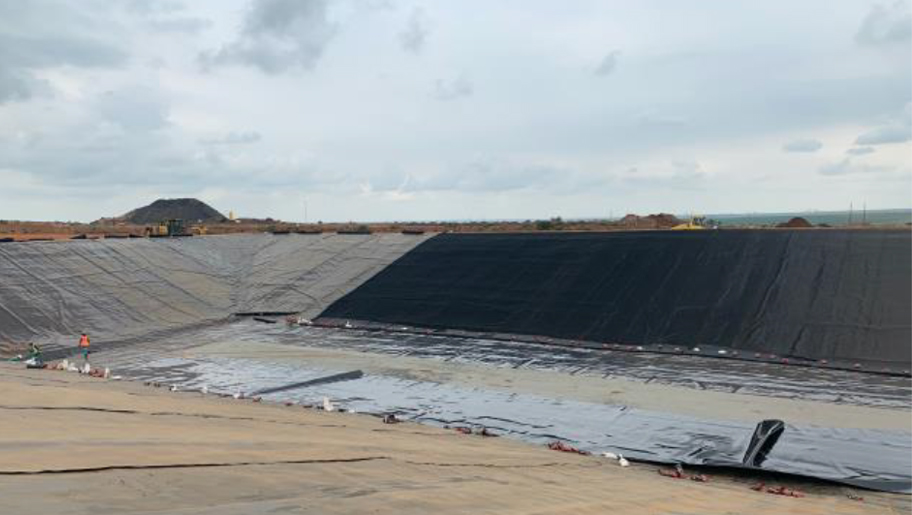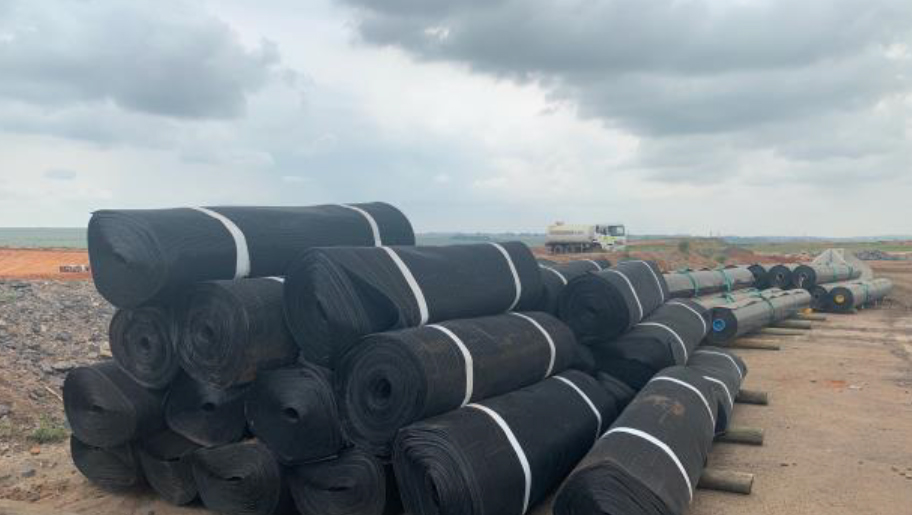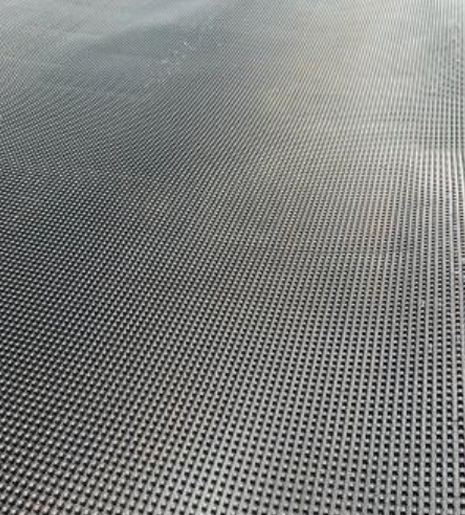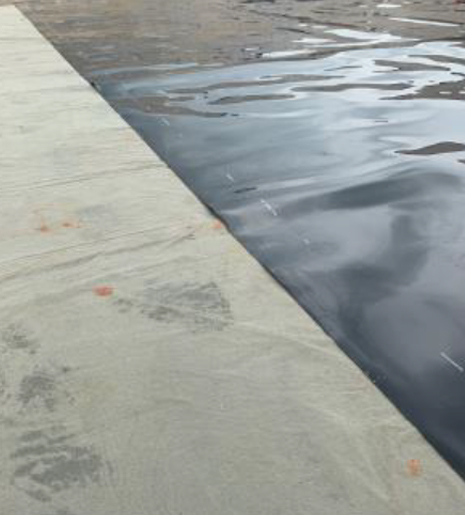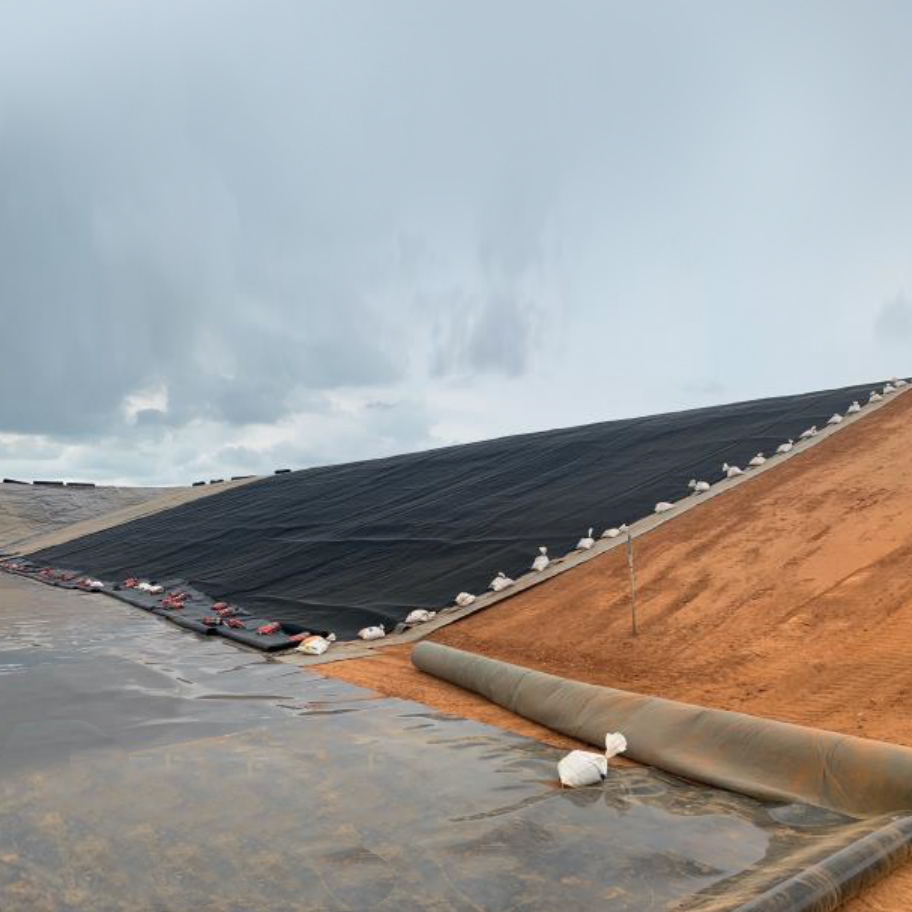
NATURE OF INTERVENTION
Pollution Control Dams are in recent years constructed using complex composite liner systems which in turn need to provide for a number of functions, over and above containment alone.
Designs must take account of leakage detection systems and the adequate failsafe monitoring thereof, as well as the proper and adequate interaction of the various layers within the liner system to ensure overall stability and effectiveness.
Historically, these lining systems have incorporated a combination of polymer liners together with the use of a wide range of natural granular materials to fulfill the various functions. These have often proved to be cumbersome to install, expensive and difficult to procure and not very effective over the long-term period.
Through the introduction of various Geosynetics products, to replace conventional construction materials, durability, cost and performance of composite liner systems has greatly improved leading to lower maintenance requirements and improved efficiencies over extended design and operational lifespans.
SOLUTION
MD-Drain 4 50, TeMa’s high strength, high flow, Polyolefin-based cuspated drainage core was placed down the side slopes and along the floor area, between the secondary and primary geomembrane liners, as a leakage detection layer. This layer fell to a collection sump, integrated into the floor and existed to a monitoring manhole.
TeMa SA also supplied its TeMa-TEX NW8 which was used as a liner protection layer beneath the
secondary 1.5mm HDPE geomembrane providing protection from any adverse effects of the
underlying compacted clay layer.
The use of the TeMa Geo products, provided significant benefits over other conventional natural
materials to the project in terms of cost, ease of installation and a reduction in construction time.

